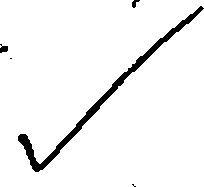Cochin University of Science and Techology (CUST) 2006 M.B.A Industrial Relations - Question Paper
MBA.F.2/06.8(b)

M.B.A. DEGREE (FT) II SEMESTER EXAMINATION, MAY 2006
INDUSTRIAL RELATIONS
(Old scheme)
Time: 3 Hours
Maximum marks : 50
(Answer ALL questions)
(All questions carry EQUAL marks)
(5x 10 = 50)
Explain the influence of socio-economic and political environment on th<: industrial relations system.
I. A. B.
II. A. B.
III. A. B.
IV. A. B.
OR
Briefly describe the salient features of'ndustrial Employment (standing < rders) Act, 1946.
Trade Unions in India, at cross roads. Comment.
OR
What are the causes and consequences of industrial conflict and dispute '
What are the various conflict resolution machinery available ?
OR
What are the conditions under which strikes are termed as legal, illegal a id unjustifiable.
Explain the methods available for achieving industrial place.
OR
What are the common grievances in any' industry ? Explain the grievanc : handling machinery.
V. Case analysis:
The Andhra Pradesh State Road Transport Corporation has been providing pas senger transportation facilities since 1956. It has been extending its operation from one region to anothe' by nationalizing the private passenger transport companies on a phased ir anner. Presently it is operating it; services in 80% of the routes in the State. It nationalised two routes in E:;t Godavari District in the State in October, 1988. normally it absorbs all the employees working in passenger transport companies before nationalization and fix their wages at par with the scales of similar categories of jobs.
The pay scales in the corporation are determined on the basis of mutual agreement between the management and the recognized trade union. The scales are revised once in three years. T le recent agreement came into force with effect from September, 1988. There are two classes in the drivers category, i.e., Class I (drivers working on long distance buses) and Class II 'drivers working in short distance routes).
The pay scale of Class II drivers is enhancedfrom Rs.600-1200 to Rs.900-1601) (with effect from September, 1988) in consequence to the latest agreemenThe agreement further says th< t the pay scales of the drivers drawing the scale of Rs.600-1200 will be fixed in the scale of Rs.900-1600.
The corporation absorbed 10 drivers who were with the private passenger traisport companies upon the recent nationalization of two routes. The personal department fixed the scale of hese 10 drivers in the scale of Rs.600-1200 and it rejected their plea of fixing their pay in the scale of Rs.9C 0-1600 saying that only the drivers drawing the scale of Rs.600-1200 are now eligible to draw the new icale of Rs.900* 1600. the corporation has set up both the grievance machinery and the collective barga ning machinery to resolve employee problems. Then these drivers submit:ed this issue to the foreman who is their immediate superior. The foreman told them to raise this issue in collective bargaining with the help ol trade union leaders, as it is a policy issue. These divers approached the trade union leaders and persuaded t] lem to solve the issue. The trade union leaders included this item in the draft agenda to the collective bargair ing committee to be held in January 1989. But the collective bargaining committee deleted this item from the draft agenda saying that this issue can be settled through grievance machinery, as only 10 drivers o it of 3,000 drivers of the corporation are concerned with this issue.
Questions:
1. Who is correct ? The personnel departmt nt or the foreman or the collectiv 2 bargaining committee.
2. Where do you place this issue for redress;il ?
3. How do you redress this grievance ?
|
Attachment: |
| Earning: Approval pending. |
